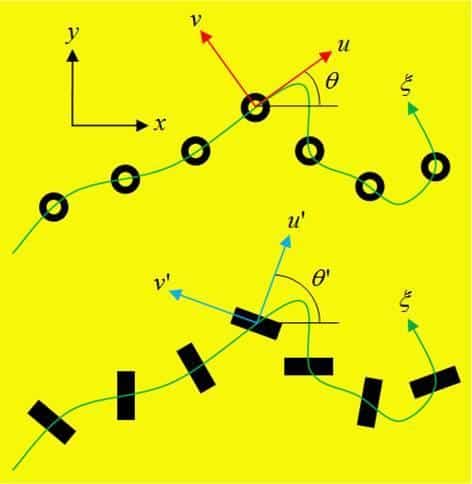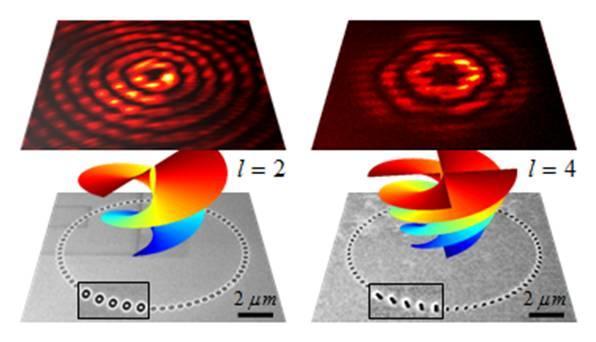TheMade possible as a result of a geometrical deformation of a wire composed of conjugated nanoantennas

Technion researchers from the Faculty of Mechanical Engineering and the Russell Berry Institute for Research in Nanotechnology have created new optics by geometrically deforming a wire composed of conjugated nanoantennas. This is reported by the scientific journal Nano Letters.
The researchers developed new optics based on a geometric distortion of space at the nano scale. They designed an optical nanoantenna and created an array of such antennas with a bond between them. Each antenna, about ten nanometers in size, was created using ion focusing.
"I was driving in my car, I looked at the antennas on the vehicles around me and the question arose in my mind - what will happen when we twist the antenna?" Professor Erez Hasman from the Faculty of Mechanical Engineering explains. "We attached the nanoantennas and created a straight wire of antennas that behave like a single antenna. We bent the wire and distorted the space so that the wire looks like a coiling snake. We measured the light coming out of the winding wire and it became clear to us that by twisting the wire the light can be shaped flexibly. We demonstrated in the laboratory the rotation of light like a spinning wheel that can be used as a nanomotor, and the deflection of light at different angles and wavelengths for the purpose of switching the light on a nanoscale."

In the second stage, each antenna continued to "run" on the wire, but did so in its own independent direction, which allowed the researchers an additional degree of freedom for the design of new optics based solely on a geometric distortion of space and not on the optical path difference that exists in normal optics, such as lenses and prisms. This opens up possibilities for building components on the nanoscale for information processing, and logic gates that will enable the production of very fast nano-optical chips.
Professor Hasman's vision, which was published in Nature Nanotechnology, talks about tiny engines that will be powered by light alone, rotate DNA and open it - for its repair.
The development was done in the nano-optics laboratory at the Technion with the participation of Dr. Vladimir Kleiner and the research students Nir Shtrit, Itai Bretner and Yuri Gorodetsky.
In pictures:
1.
2. An optical nano-engine based on light rotation with the help of a circular chain of "bigla" nanoantennas (a) and nanorods in different directions along the chain (b) which allows for increasing the light rotation.

5 תגובות
The second Yaron is not the first Yaron. I was speaking seriously based on academic knowledge.
Yaron II? i know maybe yes, maybe no. I did not understand.
There was no chain of responses to the article, which is a shame.
Then if twisted nano-optics becomes possible, maybe transmission and reception of twisted waves that have not been seen so far from nano-towers and from the astronomical space will also be possible.
Space is not distorted as in a gravitational field (although gravitational fields also distort light). A different refractive index causes the rays to be tilted. How do you change the refractive index? A. Changing the compressibility of the material with refractive index, b. Semiconductors with a variable refractive index depending on the electric field (battery, photorefractive materials). The most likely: a kind of optical fiber that captures the signal (nanotubes - waveguide) inside it and prevents it from leaving other than through an exit. It is also possible to control the wave front by materials.
I didn't understand anything, can someone explain in simple terms what it is, and what it gives practically?
I did not understand. What is the distortion of space? And what light comes out of there?